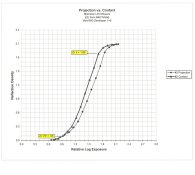Juan Valdenebro
Member
Hello,
Is it a common belief?
Are contact prints in general softer than enlargments if we talk about same negative and same contrast filter for multigrade printing?
That kind of matches my memories: often my first prints from a negative I checked on a contact sheet, looked harder than I expected: harder than what I saw on the contact print...
Is it a common belief?
Are contact prints in general softer than enlargments if we talk about same negative and same contrast filter for multigrade printing?
That kind of matches my memories: often my first prints from a negative I checked on a contact sheet, looked harder than I expected: harder than what I saw on the contact print...











